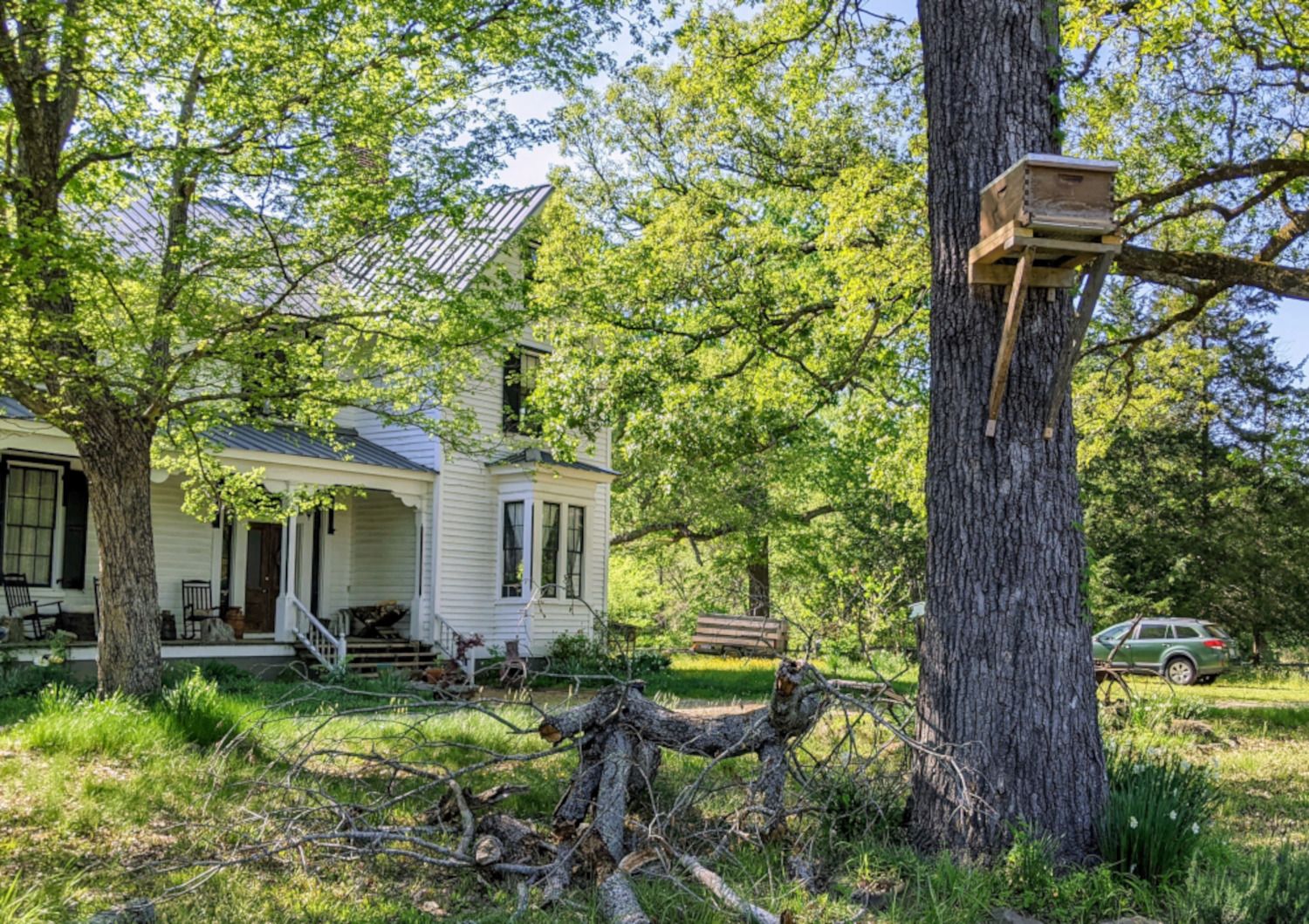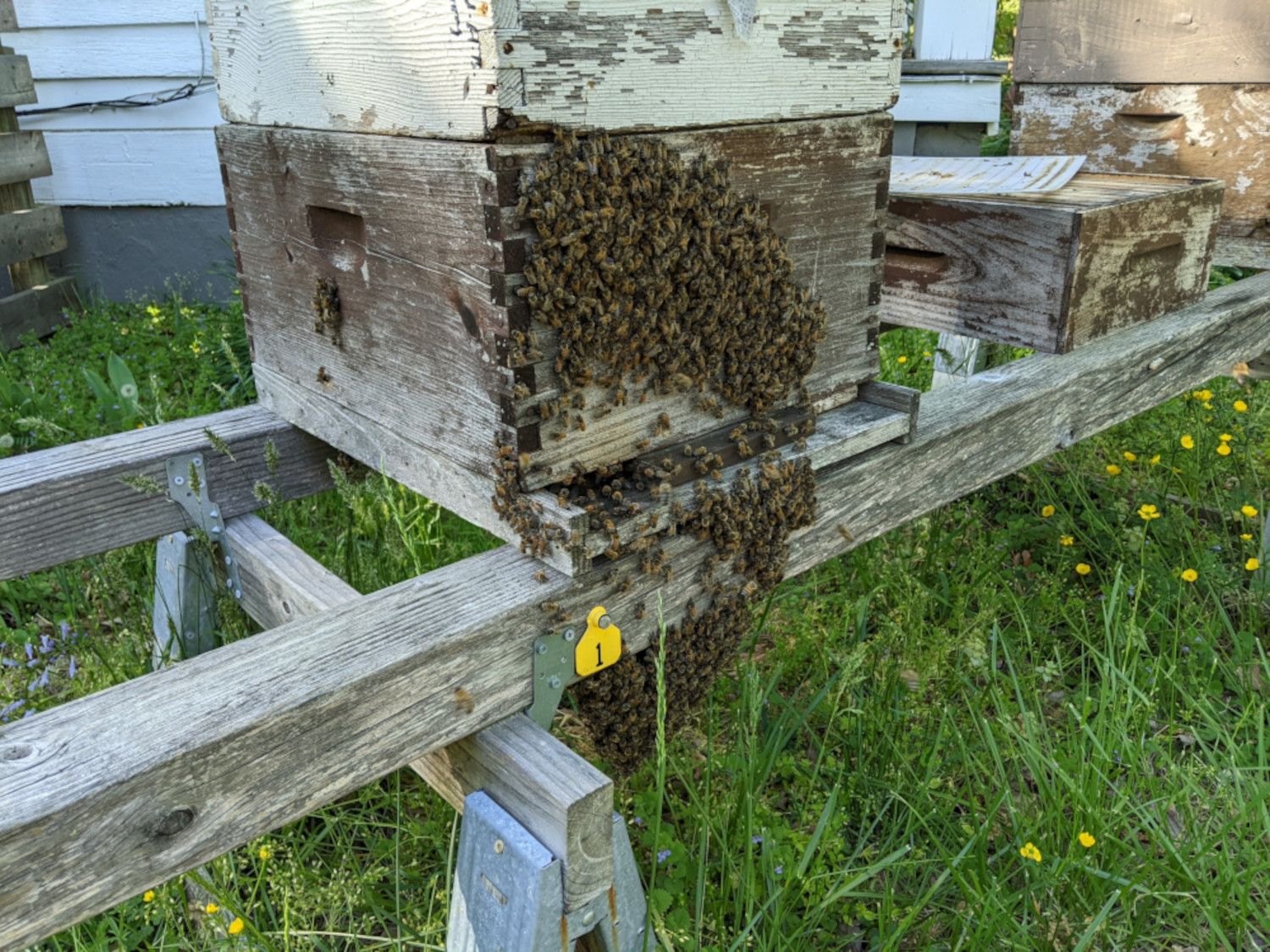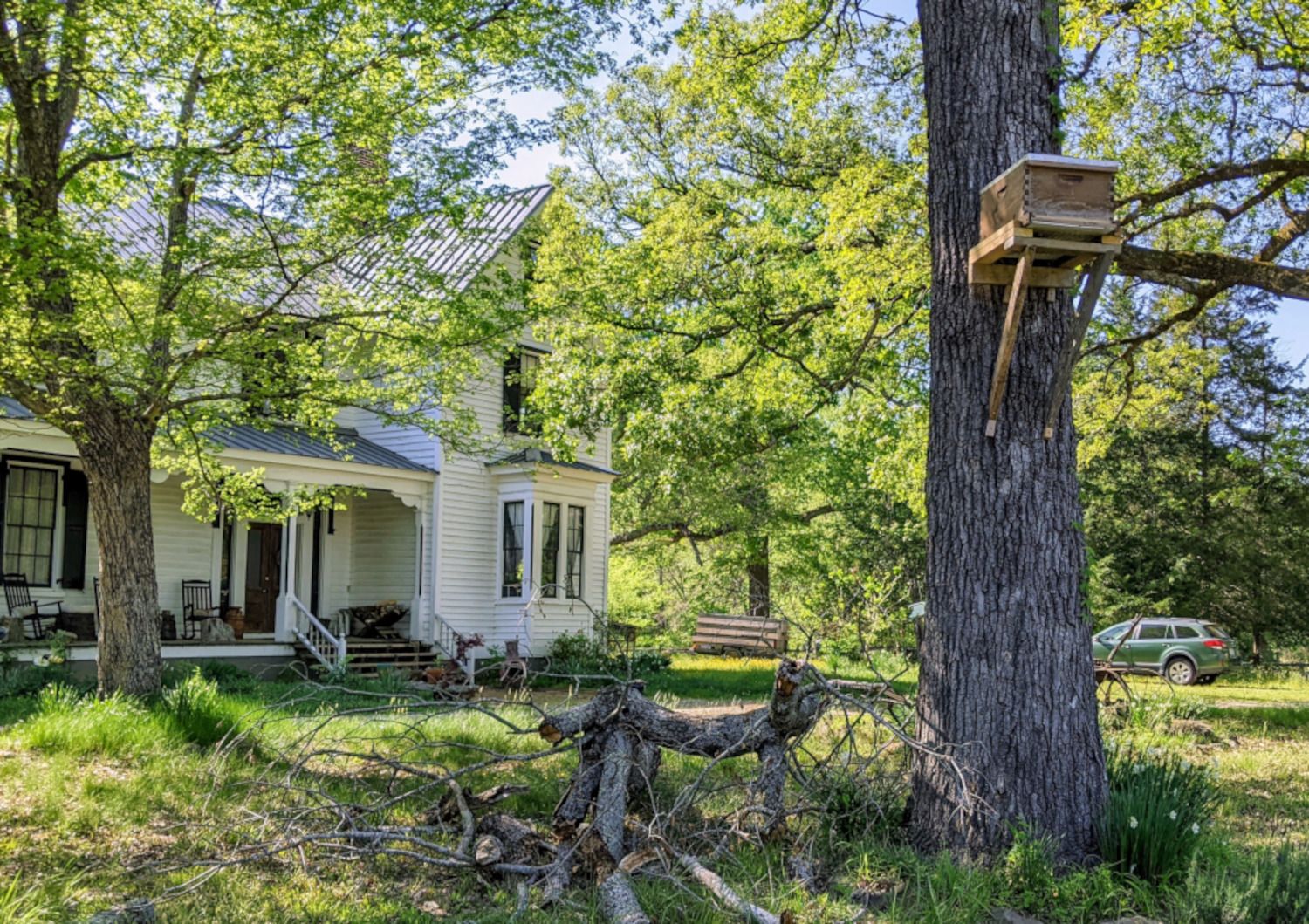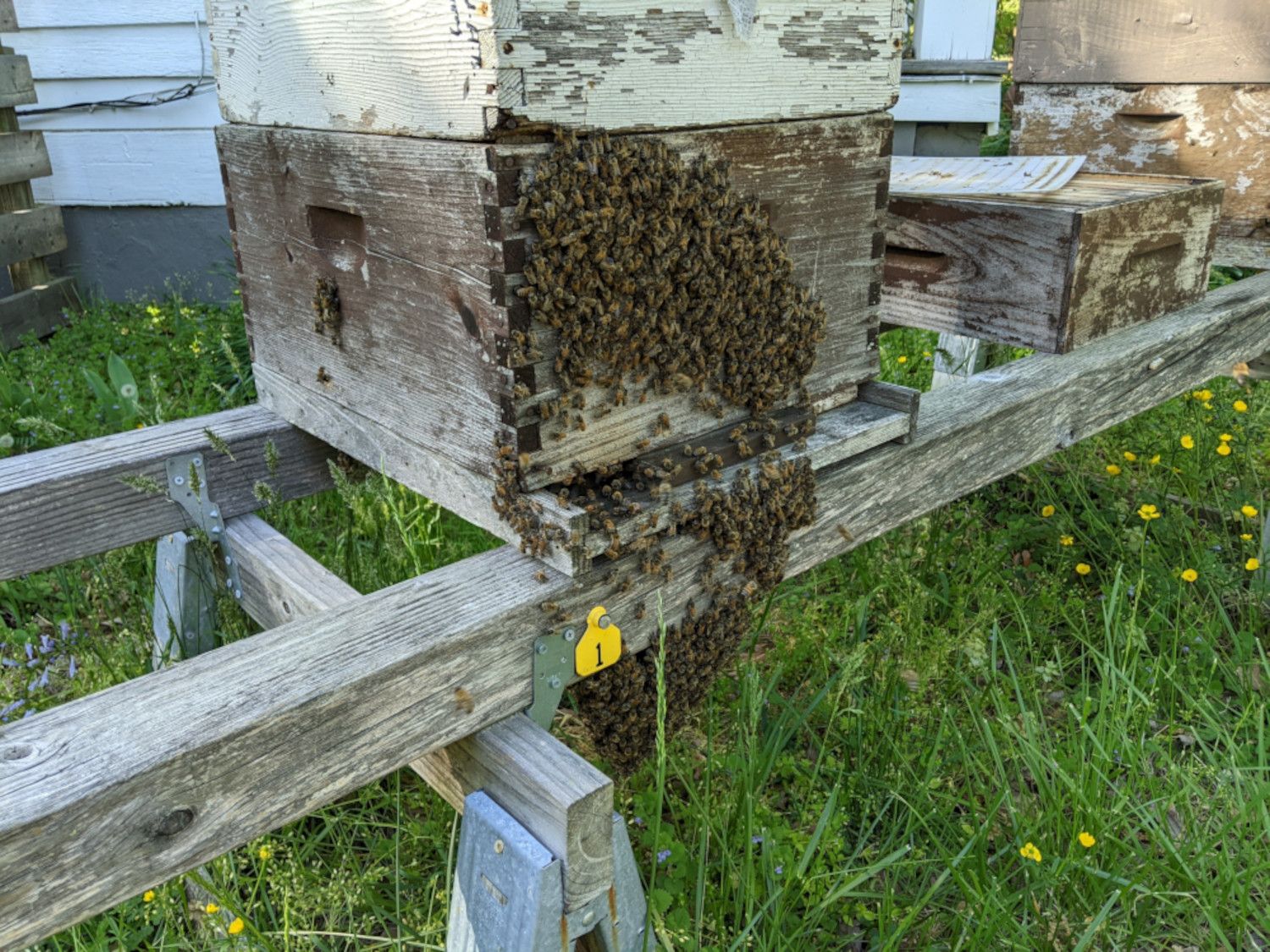Swarm Trap
Set up swarm traps for the odd chance of expanding your apiary.
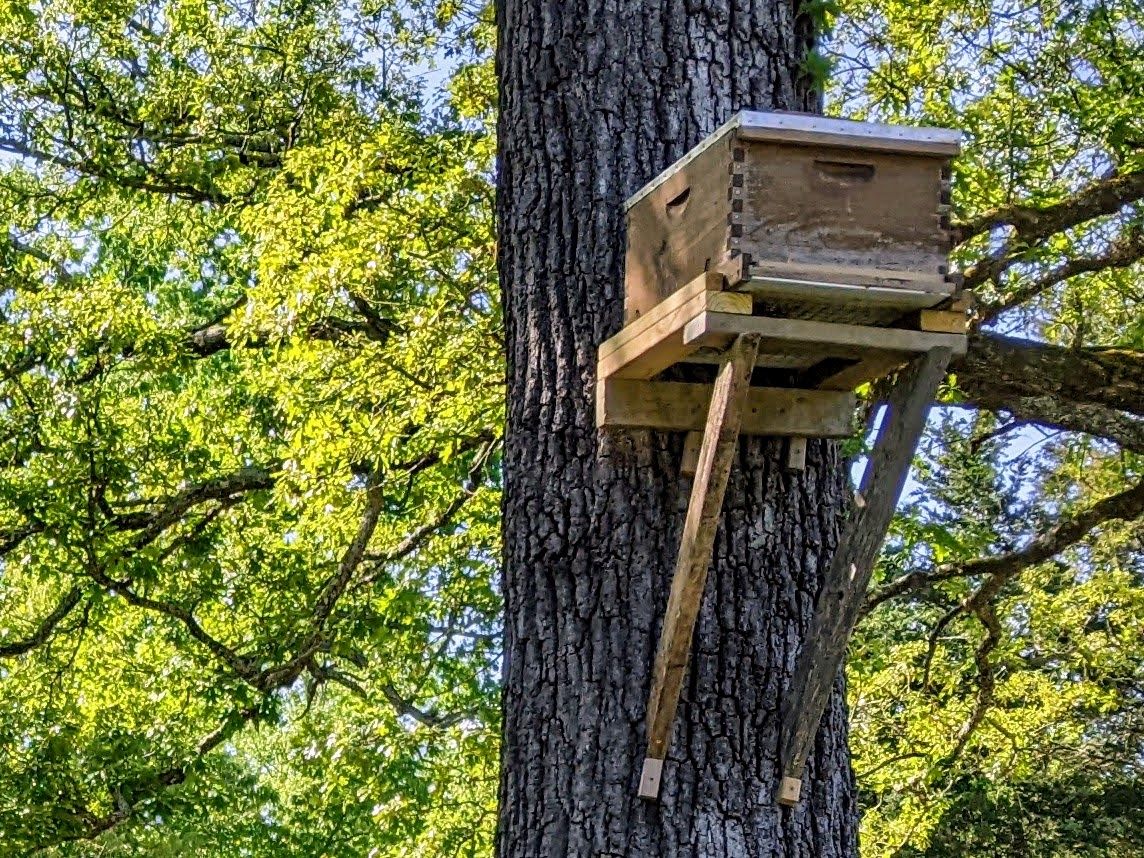
On April 24th, one of our hives swarmed (see video here).
Swarming is honey bee reproduction in action. (Really honey bee colony (a super-organism) reproduction in action.) Sometime in the lifecycle of a colony, a consensus triggers a process where maybe half the hive departs, taking the old queen with them. The remaining bees stay behind and rear a new replacement queen who will—once mated, on the wing away from the hive—take over the old digs.
When a swarm departs, they do it in a wildly dramatic cloud (see video). They will then collect on some structure, often 15+ feet in the air (usually a tree branch). This is a staging area. While they wait, scout bees will break away from that cluster and search for a new home to move into that meets their spec.—ideally, someplace safe and dry and usually, surprise surprise, 15+ feet in the air. (Beekeepers manage hives at waist level only for their convenience.)
If we are fortunate, we can sometimes grab a ladder, collect that cluster of bees, and give them a new home. (There is a way to do this without much fuss.)
If we are SUPER fortunate, those scouts will search that same bee yard, find some empty equipment, and move right in. Many beekeepers attempt to take advantage of this behavior and leave empty hives scattered about their bee yards—all set up and ready to be used. We call these designated hives swarm traps. More often than not, though, swarms will bypass this equipment. One of the primary reasons is because, if you recall, that 15+ feet seems to matter to honey bees looking for a new home.
In the spirit of expertly playing the swarm game, the more persistent beekeeper will erect empty boxes in the air at a height honey bees prefer.
Well, here at Tandem Farms (The Carolina Bee Company), we did just that. We erected an empty hive in an old oak tree, about 15 feet or so in the air. Sadly, we constructed this elevated trap after this swarming incident. Of course, there's no guarantee those bees would have picked our equipment to move into anyway, no matter how nice and shiny.
What happened to the swarm? We are not sure. We saw them beginning to cluster in that tree, and then we left for a while so they could settle in peacefully. But when we came to check on them later, they were gone. They either swarmed off to a better staging area, or their scouts already found a new home, or as sometimes happens, perhaps they changed their minds (collective minds) and returned to their old hive. It happens. We took a brief tour of the bee yard, and hive #1 looked rather full (reference the photo of the bearding hive), so maybe that's where they ended up.
Swarming behavior is a fascinating event coordinated through consensus and is rather magical to witness. Maybe the next swarm will accept our invitation to move into a nice clean hive way up in a tree.
